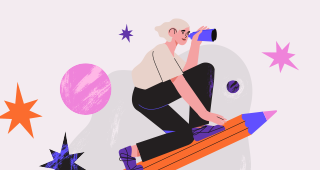Magazine
Design incorporates objects, people,
ideas based on the small pleasures of everyday life.
Meet your Beautiful design world with the DDP Design Fair.
-

Always Take Pride as a Designer and Try Until You Succeed!
Giving a hand to be ready for a career as a designerWritten By Nayoung Kim (Career Curator of 2021 DDP Design Fair)I hope to see you continue pursuing your career as a happy designer. You are about open the first door, one of the biggest choices in life. I think life is not any different to traveling through an endless desert. Life is a series of endless challenges, like climbing over a sand dune only to face yet another sand dune. You believe that everything will work out just fine if you go to college, however, when you actually go to college, you are likely to face a bigger problem — getting a job — and another problem arises even if you land a job.Just like an oasis makes the desert look more beautiful, maybe your life becomes meaningful because complex challenges are ahead of you anytime, anywhere. The things you learn from this job fair will not be achieved easily, like taking a trip to a desert where you have to walk through an endless road through sand dunes. There might be an oasis somewhere. As you need an accurate map or guide to find that oasis, you need to have your own thing and mentor to outsmart many of your competitors.A variety of experienced professionals will be your mentors to help you turn your ability into your greatest weapon. Professionals who have pursued a career as a designer will share their experience to add confidence and practicality to your ability, and I hope their experience and advice serve as a beacon of hope to prospective designers who are standing in the dark, trembling with anxiety.I also want to open up the possibility to help you prepare for the future as a great designer, not only focusing on the reality — getting a job — before your eyes. Therefore, I would like to offer an experience where you can imagine meeting your future self.
2021-08-04699





